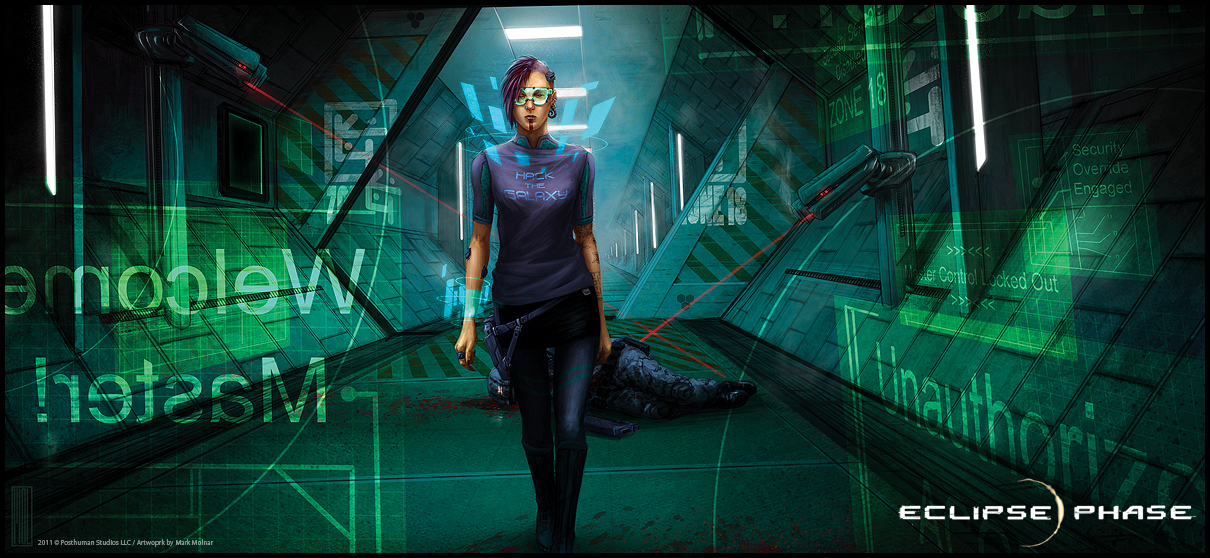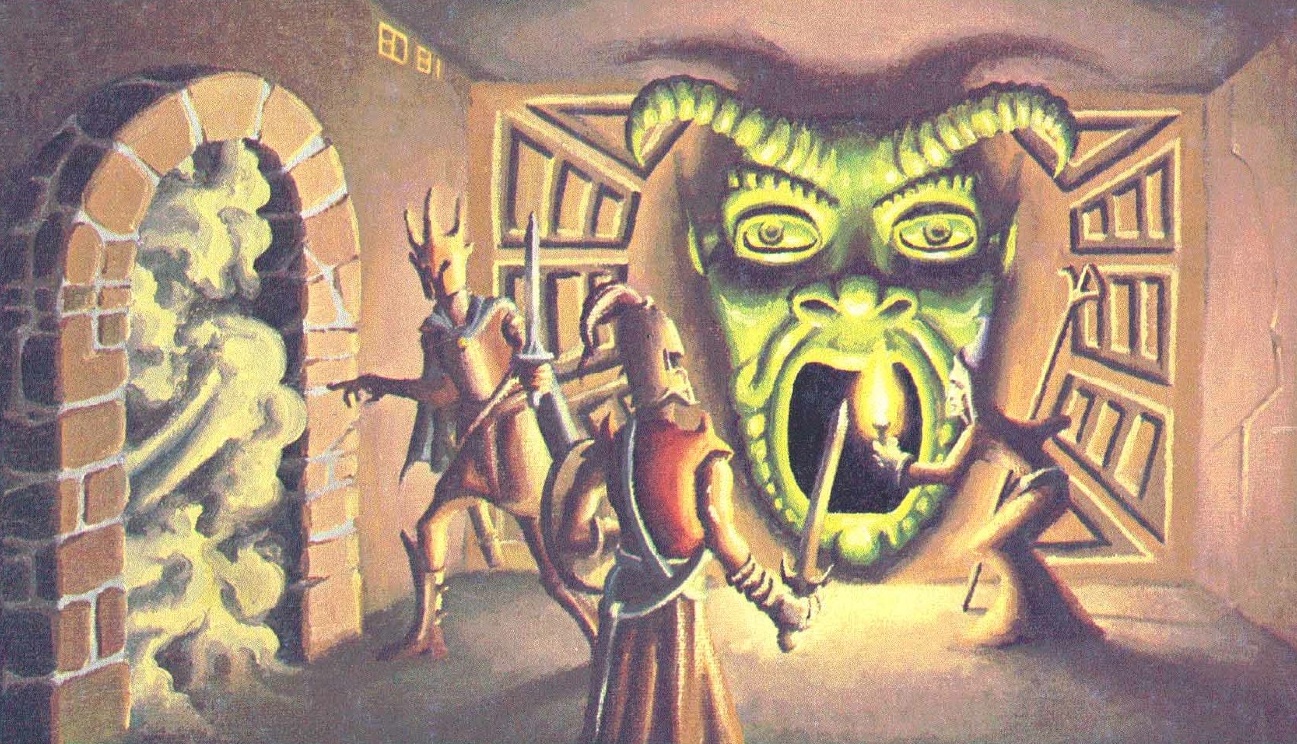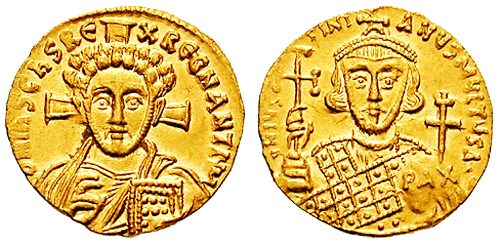Go to Part 1
THE BLACK POUCH

The black pouch is an insidious device, designed to punish the greedy and prey upon the indigent. It appears as a normal coin bag, made out of black leather. When it is first found, the black pouch will contain a single gold coin. When someone withdraws the coin, they will lose 1 hp as the black pouch drains the living energy from their body. Unfortunately, the magic of the pouch will also work to disguise this parasitic act from the victim’s consciousness: The victim must make a Wisdom check (DC 20). If the check is a failure, the DM should keep a secret total of the victim’s total hit points (this damage heals normally).
The next time the pouch is opened, it will contain 1+1d6 coins. Each coin removed will, once again, inflict 1 hp of damage. (A Wisdom check should be made each time a character reaches into the pouch. Note that characters can remove more than one coin each time they reach into the bag.) Each time the black pouch is opened after it has been emptied of coins, it will have generated the same number of coins as the last time, plus an additional 1d6 coins.
Recipients of the black pouch will often count themselves blessed – but if they are not careful, they will be killed by their supposed boon. If the character withdraws a number of coins from the pouch sufficient to result in death, have them roll a Fortitude save (DC 20). If successful they will survive with 1 hp remaining (and be aware of what the black pouch is doing to them, if they weren’t already). If the roll is a failure, then the black pouch has drained the last of their life from them.
Those who discover the truth of the black pouch will at least count themselves lucky for the wealth it has given them. But even that, unfortunately, is nothing more than a cruel trick: The black pouch does not create the gold it offers, it merely teleports it from the nearest available source… which is almost always the money pouch of the very person drawing from the pouch.
Caster Level: 9th
Prerequisites: Craft Wondrous Item, vampiric touch, teleport
Market Price: 50,000 gp
CHEST OF ENTANGLEMENT
In many tomes of arcane knowledge, the chest of entanglement is known by the name of kingbane. To most, the origins of this obscure title are lost to the long tides of time. Those fortunate enough to have obtained a rare copy of Nardonne’s A History of the Kings and Their Follies, however, know of a tale that may lie at the heart of this matter: King Edan XIII of Oldren (a kingdom long since lost to the surface of the world), it is written, waged a long and terrible war with the elves of the wood.
In the end, Edan was victorious. But the elves were bitter in their loss, and so they plotted their revenge even as their enemies celebrated their triumph: When King Edan demanded that his new subjects gather his bounty, they did so – placing it within great chests of oaked, each carved with all the skill the elves could muster. Such skill was great, and, indeed, the chests themselves were a treasure beyond value.
But they were also a trap. King Edan marveled at their beauty, and stepped down from his throne of war when they arrived at his woodland court. “And so,” Nardonne writes, “Their trap was sprung. The king was bound and those who lurked in ambush struck. And King Edan was no more.”
Although Nardonne’s narrative does not positively identify the nature of the trap contained in the chests, the description he provides of the chests leads many to suspect they may have been chests of entanglement – the bane of King Edan.
A chest of entanglement is an ordinary, wooden chest, decorated with exquisite carvings of vines and foliage. Attempts to detect traps – either with the Rogue class ability or the find traps spell, for example – will fail, as the chest is not trapped. A successful Search check (DC 25), however, will reveal that one of the carved leaves is a concealed panel, which can be swiveled to one side to reveal a small hole, no larger than a man’s thumb. A detect magic spell will reveal a faint aura emanating from inside the chest.
A chest of entanglement is filled with two thousand gold coins. When the chest is opened, the coins will fly out of the chest and begin clinging to the skin and clothes of whoever opened the chest (if more than one character opened the chest, the coins will attack one of them randomly). The afflicted character must make a Reflex save at DC 20 once every round in order to evade the coins – a failure, however, indicates that the coins have successfully coated the character’s body, placing them under the effects of an entangle spell (-2 penalty to attack rolls, -4 penalty to effective Dexterity – characters attempting to cast a spell in this condition, or while being attacked by the coins, must make a Concentration check at DC 15 or lose the spell).
As with the spell entangle the character can escape the coins with a successful Strength check at DC 20, but the coins will continue to pursue them (forcing them to, once gain, make Reflex saves). The coins will not relent until the lid of the chest has been closed – at which point they will fly back into the chest through the concealed panel.
Caster Level: 3rd
Prerequisites: Craft Wondrous Item, entangle
Market Price: 6,000 gp
REFLECTIONS ON COINS OF THE DAMNED
The first thing I remembered upon rediscovering this article was the difficulty I had writing a new introduction that basically covered the exact same ground as the introduction from the first article.
I think this similarity of introductions also contributed to why the article lay forgotten on my hard drive for so long: I’d see the file, but end up just assuming that it was a different title for “Gilted Fiends”. In fact, “Coins of the Damned” was the original title of “Gilted Fiends” and it was changed during the development process because Dragon Magazine didn’t want the word “damned” appearing in their pages. Campaign Magazine didn’t have such qualms, and so it made sense to recycle the title for the sequel. (Which no doubt also contributed to my confusion.)

















